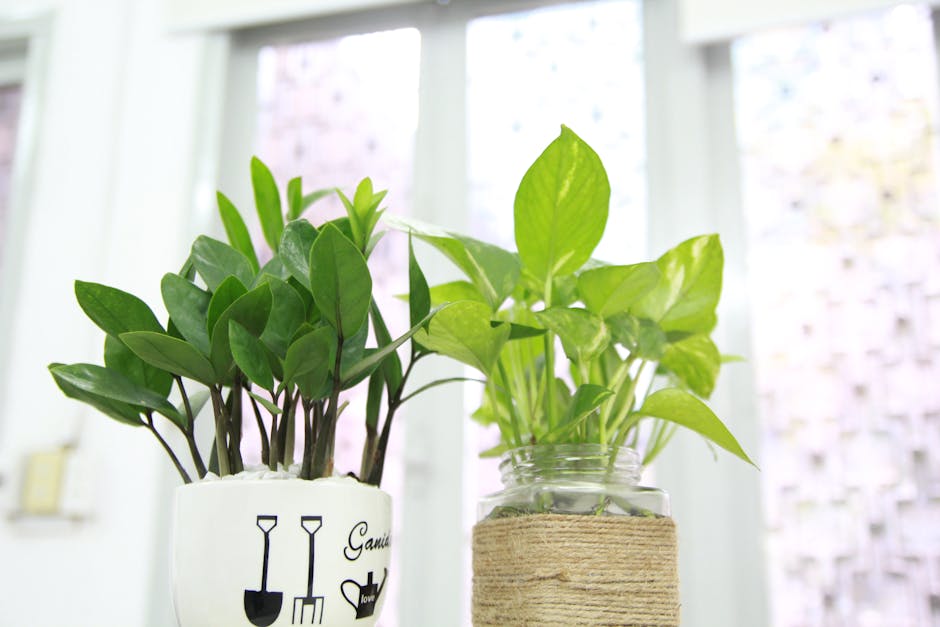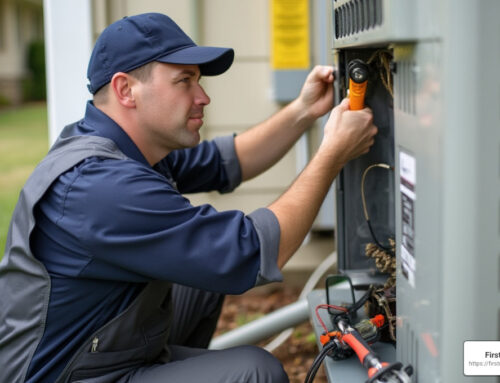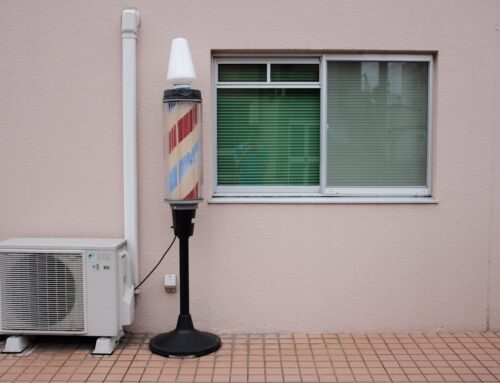
Houseplants improve air quality—this claim has been around since NASA conducted a well-known study in 1989. Before you dive deeper into the topic, here’s what you need to know:
-
Houseplants can reduce certain indoor air pollutants, especially volatile organic compounds (VOCs) like formaldehyde and benzene.
-
The effects are modest. You would need an impractical number of plants to significantly cleanse the air in a typical home or office.
-
Natural ventilation plays a bigger role in air purification. Even with many plants, the exchange of indoor and outdoor air usually does more to remove pollutants.
The idea that houseplants can improve indoor air quality is enticing and is partly rooted in the pioneering research from NASA. This initial study sparked a belief that the same houseplants adorning desks and living rooms could help purify air in enclosed environments, initially meant for space stations.
While plants do contribute to cleaner air by absorbing some pollutants, the effect is only impactful under specific, controlled conditions. In reality, maintaining optimal indoor air quality relies more on methods like proper ventilation and air-purification systems.
With Frank’s expertise in mind, ensuring a comfortable and healthy environment in large commercial buildings involves a strategic focus on reliable HVAC systems rather than a jungle of potted plants.
Do Houseplants Really Improve Air Quality?
The belief that houseplants improve air quality gained traction from a 1989 NASA study. This research aimed to explore how plants could clean the air in closed environments, like space stations. NASA finded that certain houseplants could absorb volatile organic compounds (VOCs), such as formaldehyde and benzene, which are common indoor pollutants.
VOCs are chemicals that can evaporate into the air, contributing to indoor air pollution. They come from everyday items like paints, cleaning products, and even furniture. Exposure to VOCs can lead to health problems, including respiratory issues and headaches.
The NASA Study
NASA’s study found that houseplants could reduce levels of VOCs in small, sealed chambers. Plants like the peace lily and English ivy were highlighted for their ability to absorb these compounds. However, the conditions in NASA’s study were far from what you’d find in a typical home or office. The research was conducted in controlled environments, where plants had a significant impact because of the limited space and high concentration of VOCs.
Real-World Impact
In everyday settings, the impact of houseplants on air quality is much less pronounced. A 2019 meta-analysis revealed that achieving the same air-purifying effects seen in labs would require an impractical number of plants—between 10 to 1,000 per square meter of floor space. Clearly, this isn’t feasible for most people.
Moreover, natural ventilation—like opening windows or using HVAC systems—plays a much larger role in maintaining air quality. Air exchange between the indoors and outdoors helps remove pollutants more effectively than houseplants can.
Conclusion
While houseplants do absorb VOCs, the effect is minimal in real-world conditions. For significant improvements in indoor air quality, focus on ventilation and air purification systems. Houseplants can still be a beautiful addition to your space, offering benefits like improved mood and aesthetics, but don’t rely on them solely for cleaner air.
The Science Behind Houseplants and Air Purification
Houseplants have an intriguing role in air purification, but how does it actually work? Let’s break down the science behind this process.
Photosynthesis: The Basics
Most people know that plants undergo photosynthesis. During this process, plants take in carbon dioxide and release oxygen. This is a basic function that contributes to refreshing indoor air. While this is beneficial, it’s not the primary way that houseplants improve air quality.
Microorganisms and Potting Soil: The Hidden Helpers
The real magic happens below the surface. Microorganisms in the potting soil play a significant role in air purification. These tiny organisms can break down harmful compounds like volatile organic compounds (VOCs).
NASA’s research revealed that both the plant’s roots and the soil contribute to cleaning the air. When exposed to pollutants like benzene, these microorganisms can adapt and become more efficient at breaking them down over time. This is a fascinating example of how nature adapts to help maintain balance in the environment.
The Role of the Roots
The roots of the plant also play a crucial role. They absorb not just water and nutrients but also some air pollutants. In collaboration with microorganisms, the roots help convert these pollutants into less harmful substances.
Why It Matters
Understanding the science behind how houseplants purify air can help us appreciate their role in our indoor environments. While they might not replace mechanical air purifiers, they do offer a natural way to contribute to cleaner air.
In summary, while the impact of houseplants on air quality might be modest, the combination of photosynthesis, microorganisms, and potting soil creates a natural air-purifying system. This system is a testament to the incredible adaptability and efficiency of nature.
Houseplants Improve Air Quality: Myth or Reality?
The idea that houseplants improve air quality is both intriguing and comforting. But is it true? Let’s explore this claim with some scientific insights.
Meta-Analysis: What the Numbers Say
A 2019 meta-analysis reviewed decades of studies on houseplants and air quality. The conclusion was eye-opening: to achieve the air-purifying effects observed in controlled studies, you would need between 10 to 1,000 plants per square meter. That’s an impractical number for any typical home or office space.
Real-World Conditions vs. Lab Settings
Most studies showing houseplants as air purifiers were conducted in closed, controlled environments. Think of a small, airtight chamber with a single volatile organic compound (VOC) introduced. However, our homes and offices are far from these conditions. They are larger and have multiple sources of VOCs.
In real-world conditions, air exchange plays a significant role in maintaining air quality. Buildings naturally ventilate through cracks, windows, and ventilation systems. This continuous air exchange dilutes indoor pollutants more effectively than a few potted plants could.
The Role of Air Exchange
Air exchange is a critical factor often overlooked when discussing houseplants and air quality. Even in “tight” buildings designed to conserve energy, some level of air exchange occurs. This natural ventilation is more effective in reducing VOC levels than relying solely on houseplants.
While houseplants do have some ability to purify air, their impact is limited in real-world settings. The bulk of air purification in homes and offices is due to natural and mechanical ventilation systems.
Understanding these limitations helps us appreciate the true role of houseplants in air quality. They are not a substitute for proper ventilation but can be a complementary element in a larger strategy for maintaining a healthy indoor environment.
Top Houseplants for Air Purification
When it comes to houseplants that can help improve air quality, some stand out more than others. Let’s explore a few popular options that are often recommended for their air-purifying abilities.
English Ivy
English Ivy is a versatile plant known for its ability to remove pollutants like formaldehyde. It’s a hardy plant that can thrive in various conditions, making it a favorite for those new to indoor gardening.
Peace Lily
The Peace Lily is not only beautiful but also effective at removing toxins such as ammonia and benzene from the air. It requires minimal light and care, making it an excellent choice for busy individuals.
Snake Plant
The Snake Plant, also known as “mother-in-law’s tongue,” is famous for its ability to produce oxygen even at night. This makes it a great option for bedrooms, as it can help maintain oxygen levels while you sleep.
Spider Plant
Spider Plants are easy to grow and excel at removing pollutants like carbon monoxide and xylene. They are also pet-friendly, which is a bonus for households with animals.
Bamboo Palm
Bamboo Palms are larger plants that can add a tropical feel to your space. They are particularly effective at filtering out formaldehyde and are well-suited for areas with indirect sunlight.
These houseplants offer a modest way to contribute to better indoor air quality. While they can’t replace air purifiers or ventilation systems, they do bring a bit of nature indoors and can complement other air-cleaning methods.
Potential Downsides of Houseplants
While houseplants are often praised for their beauty and potential air-purifying abilities, they come with a few downsides that are important to consider. Let’s explore some of these issues.
Mold
Overwatering is a common mistake that can lead to mold growth on the soil surface. Mold spores can become airborne and may trigger allergies or asthma symptoms. To prevent this, ensure your plants have proper drainage and avoid overwatering.
Dust
Dust can settle on plant leaves and eventually get into the air. This dust can worsen respiratory issues like asthma and allergies. Plus, it can carry toxic substances like pesticides or lead. To minimize dust, gently wipe plant leaves with a damp cloth each week.
Pests
Houseplants can sometimes harbor pests like aphids, spider mites, and mealybugs. While there’s no direct evidence that these pests affect indoor air quality, their waste and body parts might become airborne and cause respiratory problems. It’s best to use non-chemical control methods first, such as handpicking pests or using water sprays. If necessary, low-chemical options like insecticidal soaps or neem oil can be used.
Pollen
Some plants release pollen, which can cause allergic reactions. Plants like Ferns, Weeping Figs, and African Violets might exacerbate allergies. If you’re sensitive to pollen, opt for foliage plants with large leaves and no flowers.
By understanding these potential downsides, you can make informed decisions about incorporating houseplants into your indoor environment. It’s all about finding a balance that works for you and your space.
Alternatives to Houseplants for Cleaner Air
While houseplants can offer some benefits, they’re not the ultimate solution for improving indoor air quality. Here are some effective alternatives to houseplants for cleaner air that focus on practical methods like source control, ventilation, and air cleaning.
Source Control
The first step in reducing indoor air pollution is to tackle the sources. Everyday items like cleaning products, air fresheners, and paints can release volatile organic compounds (VOCs) into the air. Reducing or eliminating the use of these products can significantly improve air quality.
- Choose low-VOC products: Opt for paints, cleaning agents, and other household items labeled as low-VOC or VOC-free.
- Proper storage: Keep chemicals sealed and stored outside of living areas to minimize their impact.
Ventilation
Good ventilation is key to maintaining healthy indoor air. It helps dilute indoor pollutants by bringing in fresh outdoor air.
- Open windows and doors: Doing this for just 10-15 minutes daily can help refresh indoor air. However, be mindful if you’re in a highly polluted area.
- Use exhaust fans: Install fans in kitchens and bathrooms to remove moisture and odors, preventing mold and other issues.
Air Cleaning
Mechanical air cleaning can remove particulates and pollutants from the air, often more effectively than houseplants.
- Upgrade furnace filters: Use a MERV 13 filter if possible, as it captures smaller pollutants like viruses.
- Portable HEPA air cleaners: These devices can remove up to 99.97% of particulates, offering significant air quality improvements.
By focusing on these practical solutions, you can create a healthier indoor environment without solely relying on houseplants. Next, we’ll address some common questions about houseplants and air quality to further clarify their role in your home.
Frequently Asked Questions about Houseplants and Air Quality
Do houseplants help oxygen levels?
Yes, houseplants can help with oxygen levels through a process called photosynthesis. During the day, plants take in carbon dioxide and release oxygen. This is a natural way they contribute to better air quality, albeit modestly.
However, it’s important to note that the amount of oxygen produced by a few houseplants is not enough to significantly alter indoor oxygen levels. So, while they do help, they aren’t a substitute for proper ventilation and air circulation.
Which indoor plant purifies the air the most?
English Ivy is often touted as one of the best plants for air purification. According to research, it can help remove toxins like formaldehyde and benzene from the air. But remember, these effects are limited.
In NASA’s study, English Ivy showed promise, but consider that the study conditions were not exactly like a typical home environment. Therefore, while English Ivy can contribute to cleaner air, it shouldn’t be solely relied upon for significant air purification.
Can houseplants harm indoor air quality?
Yes, houseplants can sometimes negatively affect indoor air quality. One common issue is mold growth due to overwatering. Mold spores can become airborne and trigger allergies or asthma symptoms. To prevent this, ensure plants have proper drainage and avoid overwatering.
Additionally, dust can collect on leaves and become airborne, potentially causing respiratory problems. Regularly wiping plant leaves with a damp cloth can help mitigate this issue.
While houseplants can offer some benefits, it’s crucial to maintain them properly to avoid these potential downsides.
Conclusion
Improving indoor air quality is more important than ever, and while houseplants can play a small role, they’re not a complete solution. At First Mechanical, we understand the complexities of indoor air quality and offer comprehensive HVAC solutions to help you breathe easier.
Our services are designed to tackle indoor air pollution effectively. From installation and repair to ongoing maintenance, our HVAC systems ensure that your indoor environment remains healthy and comfortable. We specialize in commercial HVAC solutions, providing fast response times for emergency repairs in Tampa, FL, and Melbourne, FL.
While houseplants like English Ivy or Snake Plant can contribute to air purification, they are no match for the efficiency of a well-maintained HVAC system. Our advanced air cleaning technologies, including high-efficiency filters and proper ventilation systems, are designed to significantly reduce indoor pollutants.
If you’re looking to improve the air quality in your home or business, consider a more comprehensive approach. Our team at First Mechanical is here to provide expert guidance and solutions custom to your needs.
For more information on how we can help improve your indoor air quality, visit our Tampa Air Quality Improvement page.
While plants can offer beauty and a touch of nature indoors, a robust HVAC system is key to truly breathing easy.














